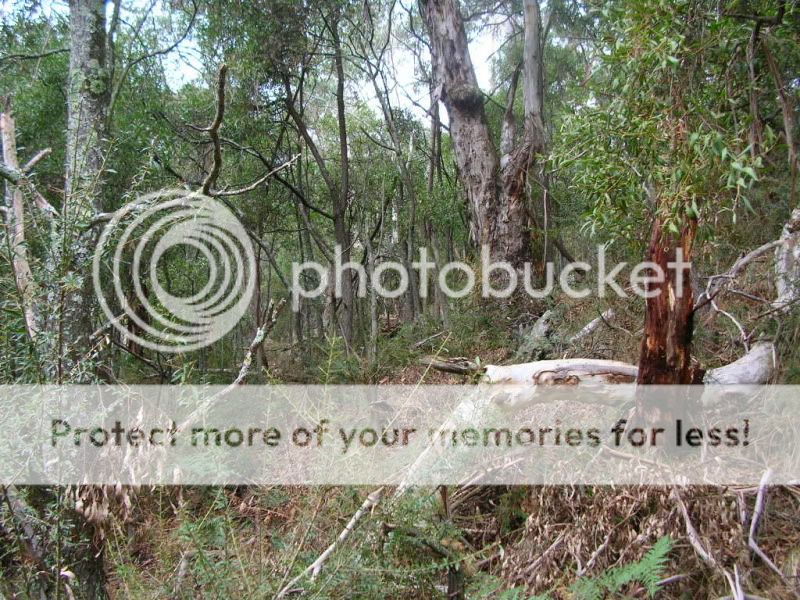G'day IZ
I hope you don't mind if I respond individually to the points you have raised :thumbup:
Mick,
Lol, you're not being a smart a$$ at all. I enjoy learning new techniques!
Our technique is similar, the only difference is you used more fuel and didn't tie the bundle it looks like to me. You used two braces and I used one. :thumbup:
Whilst there are
some similarities (including the use of a base &
a wall), there are a few
more important differences than this.

What I would class as genuine wilderness areas over here, doesn't seem to suffer from the same amount of human traffic that your "wilderness areas" areas seem to (based on 6 years of observing on the internet). So we have seasoned firewood in abundance (from the smallest grade of kindling through to tree limbs

).
So it takes me less time to gather the fuel you see in the video than it does to process the same amount with a knife. :thumbup:
Here's just a couple of examples

Another difference is that I use a couple of layers of "second grade kindling" as the base. IMO, the gaps between the kindling allow greater air flow from underneath the infant fire), than the bark you use. It takes longer to burn through 2nd grade kindling than it does 1st grade kindling, so your fire will stay off the wet ground for longer.
I also trim the 1st grade kindling so that most of it is above the firestarter, rather than have at least 1/2 of the kindling sit away from the heat source as you have shown.
I also use 3 braces (one at the back and 2 along both sides rather than one).
This ensures that most of the trimmed kindling sits immediately above the heat generated by the firestarter & this heat is not lost at the upwind end of the firelay, due to the brace at the end (have another look at where the steam is moving

) and that no heat is lost from either side. :thumbup:
Therefore
all the heat from the firestarter must pass through the wet kindling, which is initially used to dry & then ignite the first grade of kindling that can then be used to ignite the subsequent grades of kindling (as shown). :thumbup:
Mick,
.....From my experience it's easier (while it's raining for example) to get a fast, hot split wood fire going than it is to get a smoky, wet twig fire going. It's more work but to me it's worth it.
Or really the best of both worlds for me is to make shavings and split out pencil lead and pencil thick pieces, then put on finger and thumb size twigs and finally put on split wood fuel. That blend works for me under most conditions.
What you are seeing in the previous video is
not smoke, but steam (as I previously mentioned, it really is an indication of how wet the wood is that I am using

).
Don't get me wrong. Using the dry inner wood is always easier to light (have a look at the video I took on the same trip to obtain drier inner wood (
note: this was done under the drier conditions of a tent fly

)...
[youtube]je8CgtP1-jU[/youtube]
.....and it gave me sufficent kindling for a couple of fires.
I readily admit that many here would consider that I'm splitting hairs

But please consider that I was taught by a genuine outdoorsman (my Father) that insisted that I know how to light a fire with wet wood
without an edged tool (ie either a hatchet or a knife), then you might understand where I'm comming from

I've got to be honest here, but just about anyone can light a fire with dry wood (especially when allowed to use a match).
I'm also kinda suprised that the BushcraftUSA forum didn't make it a requirement to start a fire with
wet wood (after all this would have
really sorted out the men from the boys

).
Please give both methods a try (and please pay attention to the details).
I know that
[URL="http://www.knifeforums.com/forums/showtopic.php?tid/805933/"]"others in the past"[/URL] have noticed it really does make a difference with wet wood.

I sincerly hope that you and others who read this take the time to read the whole of the linked post, "cause" you'll see the text that supports my opinions.

Take care Iz :thumbup:
Kind regards
Mick




